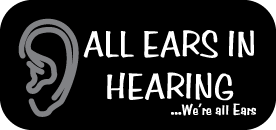Bone Conduction Implants
Understanding Alternative Hearing Solutions
Bone conduction offers a fascinating way to hear sound without relying on the traditional ear canal and eardrum. Instead of sound waves traveling through the air, bone conduction sends gentle vibrations directly through the skull to the inner ear. This means sound bypasses the outer and middle ear entirely and goes straight to the cochlea — the part of the inner ear that turns vibrations into signals your brain can understand as sound.
This technology is especially useful for people who have problems with their outer or middle ear, such as chronic infections or structural blockages. Bone conduction implants take this principle and refine it into an advanced, surgically implanted hearing solution.
How Bone Conduction Implants Work
A bone conduction implant has three main parts that work together to deliver sound. The external processor picks up sound from the environment, processes it digitally, and converts it into gentle vibrations. These vibrations are transferred through a coupling system — often magnetic — to a small implant under the skin. The implant then sends the vibrations through the skull to the cochlea, allowing the brain to interpret them as sound.
Modern devices use advanced digital processing to make speech clearer and reduce background noise.
Different Types of Bone Conduction Systems
There are several versions of bone conduction technology.
Some, called percutaneous systems, involve a small titanium post that connects through the skin, offering very efficient sound transmission. Others, known as transcutaneous systems, work through intact skin — either passively using magnets or actively using an implanted transducer that produces stronger vibrations.
For people who prefer not to have surgery, non-surgical bone conduction hearing aids are also available. These can be worn on headbands, built into eyeglasses, or attached to the skin using medical adhesive.
Who Can Benefit?
Bone conduction implants are ideal for people with conductive hearing loss (issues in the outer or middle ear), mixed hearing loss, or single-sided deafness where sound needs to be routed from one side of the head to the other.
Before surgery, specialists assess bone thickness, skin health, and cochlear function through scans and hearing tests. Lifestyle factors, such as activity level, work environment, and appearance preferences, are also considered to ensure the best fit.
The Surgical and Recovery Process
Surgery can be done in one or two stages, depending on the system. Some patients can have the processor fitted on the same day, while others need a few months of healing for the implant to fully integrate with the bone — a process called osseointegration.
Living with Bone Conduction Implants
Daily care involves cleaning the processor, managing batteries or charging, and protecting the device from moisture. Most people adapt quickly, though it can take a little time for the brain to adjust to this new hearing pathway. Over time, users often notice improved sound localization and comfort in noisy environments.
Bone conduction implants are compatible with most physical activities. Many users also enjoy upgrades and accessories like wireless streaming and mobile app controls.
Technology and Innovation
Today’s implants feature powerful digital signal processing that enhances speech, reduces background noise, and prevents feedback. Materials have become lighter, smaller, and more durable, with better power efficiency and wireless connectivity.
Comparing Bone Conduction to Other Hearing Technologies
Unlike traditional hearing aids that amplify sound through the ear canal, bone conduction doesn’t block the ear, reducing discomfort and feedback issues. Compared to cochlear implants, bone conduction is less invasive and suitable for people whose cochlea still functions well.
The Future of Bone Conduction
Researchers are exploring fully implantable systems with no visible parts, AI-powered sound processing, and even biological solutions that blend regenerative therapy with implants. These innovations promise to make bone conduction systems even more effective and accessible in the years ahead.
In short, bone conduction implants are a powerful alternative for people who can’t benefit from traditional hearing aids. They combine proven science with cutting-edge technology — helping more people experience sound in a natural, comfortable way.
Book an appointment
Please enter your details below and we will contact you to arrange your appointment. If you prefer to talk to us directly, please contact our hearing clinic number below.
Hearing Clinics
Rochedale South
- 5 Pannikin St, Rochedale South
- info@allearsinhearing.com.au
-
07 3841 3764
-
07 3841 3147
- 9am to 5pm. Monday to Friday.
Shailer Park
- 4/3 Mandew St, Shailer Park, 4128
- hearing@allearsinhearing.com.au
-
0478 282 561
- 9am to 5pm. Monday to Friday.
Note: Please call or text us if you like to visit our Shailer Park Hearing Clinic.
Visiting Sites
Calamvale
Springfield Lakes
Follow us on Facebook or Instagram
Please call us in advance to make a booking or fill out the contact form below to request a callback.
DISCLAIMER:
The information on this website is provided for educational purposes only. We do not support, nor recommend any products or treatments without proper hearing diagnostic and proper hearing evaluation. All users must seek professional advice before beginning treatment as well as inform themselves of known side effects/risks associated with said procedure(s).
